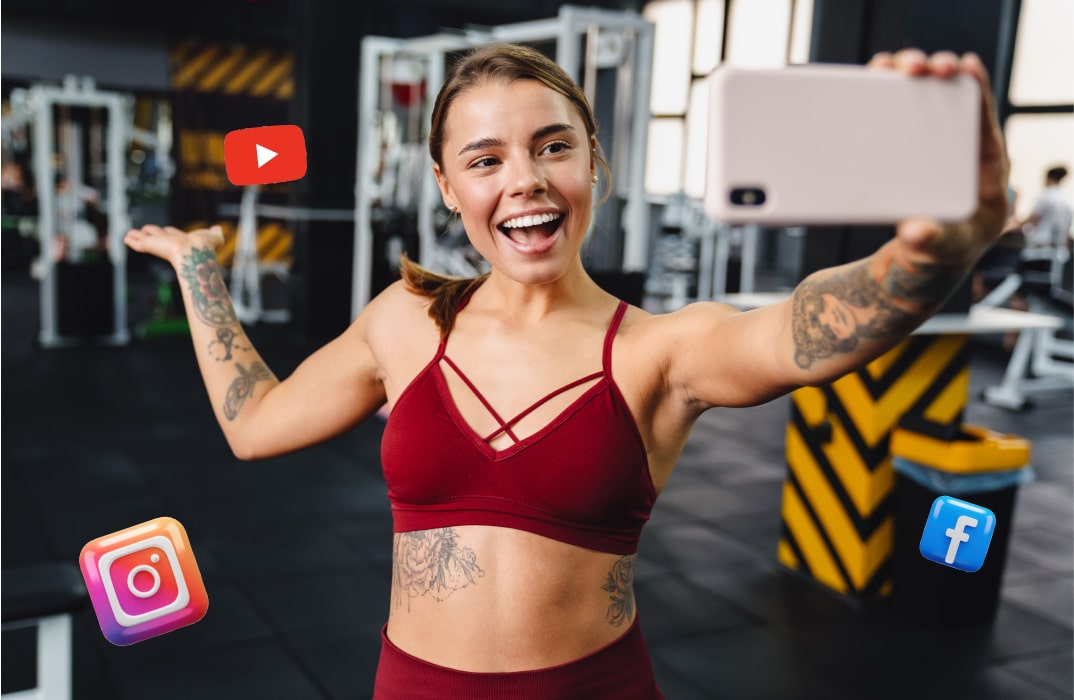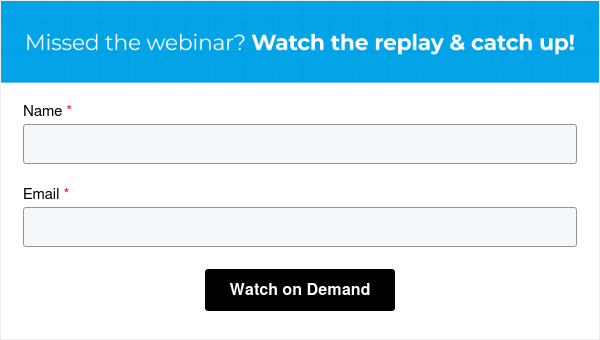How to Use Social Media to Attract High-Paying Clients Organically
In today's digital age, social media has become a powerful tool for fitness professionals to attract high-paying clients organically. Gone are the days when marketing relied solely on traditional methods or physical presence. Instead, leveraging platforms like Instagram, Facebook, and YouTube can enable fitness trainers to build a thriving business without the overhead and time constraints of a brick-and-mortar gym.
In the video above, speaker Sarah Safari discussed effective strategies for utilizing social media to enhance your fitness business. This blog will guide you through those strategies and, most importantly, how to turn that effort into attracting high-ticket clients.
Transitioning from a High-Stress Gym to a Thriving Online Business

Sarah began by discussing her personal journey from running a stressful, high-demand gym business to building a successful online fitness enterprise. She recounted the challenges of managing long hours, constant client demands, and the day-to-day stress of maintaining a physical gym despite generating a good return on investment (ROI). Over time, Sarah realized that while her gym was profitable, it was limiting her ability to scale without sacrificing even more personal time. The turning point came when she identified the ceiling imposed by running a brick-and-mortar business, where growth was dependent on physical presence, space, and resources.
By transitioning her business online, Sarah discovered a more efficient way to manage her workload and scale her operations. This move not only reduced her stress but also freed up valuable personal time—allowing her to balance her professional success with her personal well-being. The shift to an online model also revealed the immense potential of a well-crafted content marketing strategy. Through targeted content marketing efforts on social media and search engines, she was able to reach a broader, more engaged audience. Sarah’s ability to attract high-ticket clients organically became a cornerstone of her success.
Key to this transformation was her focus on using content marketing strategies that resonated with her target audience. By creating and sharing valuable content that addressed their specific pain points—whether it was fitness, lifestyle, or personalized training programs—Sarah was able to build trust and credibility. Her consistent content marketing efforts on platforms like Instagram and YouTube allowed her to position herself as an expert, reaching potential clients directly without the limitations of a physical location.
In addition, Sarah learned that the digital space offered more scalability than a traditional gym ever could. By leveraging social media to deliver targeted messages and results-driven content, she could attract clients who were willing to invest in premium, high-ticket services. This ability to speak directly to her target audience through the right content marketing strategies helped her build a loyal client base and grow her business organically.
Her journey underscores the critical role that a well-executed content marketing strategy plays in scaling a business in the digital age. It highlights how fitness trainers can use search engines and social platforms to organically attract high-paying clients, transforming their business models for greater success and sustainability.
Understanding Client Personas and Building Relationships

The foundation of effective content marketing lies in the deep understanding of your client personas, encompassing their desires, pain points, and motivations. Sarah emphasized that this understanding goes beyond demographics; it delves into the emotional triggers that drive potential clients. By truly empathizing with their struggles and aspirations, fitness professionals can create unique and relatable content that resonates deeply with their target audience.
Building strong relationships is paramount for organically attracting high-paying clients. This relationship-building process extends beyond one-off interactions; it’s about fostering a sense of community and trust. When potential clients feel understood and valued, they are more likely to engage with your brand and invest in your services. Fitness professionals can utilize various content formats—such as engaging fitness social media posts, informative videos, and authentic testimonials—to create a consistent narrative that speaks directly to their audience.
A clearly defined audience allows for tailored content marketing strategies that address specific needs. Key to this strategy is focusing on creating content that tackles your audience's specific challenges rather than merely promoting your services. For example, instead of just advertising a new training program, Sarah suggested sharing stories of transformation or providing actionable tips that help clients overcome common obstacles. This approach not only positions you as an authority in your niche but also cultivates a loyal following that appreciates the value you bring to their fitness journey.
Incorporating insights from market research and industry trends can further enhance your understanding of client personas. By analyzing trends and behaviors within your target audience, you can tailor your content marketing efforts to meet their evolving needs. This might involve adjusting your messaging based on seasonal changes, fitness trends, or even broader cultural shifts that impact your audience's lifestyle choices.
Moreover, utilizing feedback loops—such as surveys or direct engagement through social media comments—can provide invaluable insights into what resonates with your audience. By actively seeking their input and adapting your content accordingly, you demonstrate that their opinions matter, further solidifying the relationship. Tracking these interactions can also serve as key performance indicators (KPIs) to measure engagement and the effectiveness of your content strategies, helping you identify what works best.
Ultimately, the goal is to create a dynamic content ecosystem that not only showcases the solutions you offer but also invites potential clients into a conversation. By emphasizing their needs and demonstrating genuine care for their success, you position yourself as a partner in their fitness journey, making it more likely that they will choose to invest in your high-ticket services. In turn, this approach can significantly increase brand awareness, positioning your fitness business as a go-to resource in a crowded marketplace.
Standing Out in a Crowded Market: Unique Messaging
Many fitness coaches struggle to differentiate themselves from the competition, often appearing too salesy, which can deter potential clients. Sarah shared valuable insights on how to create a unique brand message and stand out in the crowded fitness industry:
1. Conduct Market Research
- Identify Weak Points: Analyze common issues in the fitness industry, such as:some text
- Quick-fix diets
- Inconsistent weight management strategies
- Craft Compelling Messaging: Use this research to develop messaging that addresses these weaknesses, positioning yourself as an industry leader.
2. Develop a Unique Content Strategy
- Address Audience Pain Points: Focus on the specific challenges and desires of your target audience.
- Provide Value: Create content that educates and inspires, such as:some text
- Blog posts discussing the pitfalls of fad diets
- Informative videos or webinars that showcase your expertise
3. Create Polarizing Content
- Challenge Conventional Wisdom: While polarizing content may attract opposition, it can also cultivate a dedicated following. Consider:some text
- Promoting bold ideas, like personalized fitness plans based on DNA testing or allergy considerations.
- Stimulate Engagement: This approach can generate conversations that draw attention to your brand.
4. Incorporate Lead Generation Tactics
- Attract Potential Clients: Develop valuable resources that address common questions in the fitness community, such as:some text
- Free guides
- Informative webinars
- Engaging social media content
- Target the Awareness Stage: Create content that speaks directly to potential clients who are just starting their fitness journeys.
5. Highlight Your Unique Perspective
- Champion Innovative Solutions: Share your unique insights and approaches to fitness, positioning yourself as a go-to resource for clients seeking effective, personalized solutions.
- Build Trust and Credibility: By showcasing your knowledge and commitment to helping others, you will encourage potential clients to engage with your content and consider your services.
By focusing on these strategies, fitness coaches can effectively stand out in a crowded market and attract high-paying clients. Unique messaging and targeted content creation will enhance your visibility and position you as a trusted expert in the fitness industry.
Also read: Mastering TikTok: A Comprehensive Guide for Fitness Professionals
The Power of Social Media for Organic Growth
Social media platforms continue to be one of the most powerful tools for attracting clients organically. Sarah highlighted several effective strategies for building a successful presence on platforms like Instagram, Facebook, and YouTube. Rather than spreading yourself too thin across multiple platforms, she emphasized focusing on a few key channels that resonate with your brand and audience.

Key Elements of Success:
- Memorable and Results-Focused Messagingsome text
- Highlight Outcomes: Your social media content should prioritize the results your clients can expect from your programs.
- Shift the Focus: Instead of merely listing features, share customer testimonials and success stories that showcase real-life transformations. This approach speaks directly to potential customers in the consideration stage, helping them visualize their own success.
- Personality Marketingsome text
- Incorporate Unique Traits: Infuse your personality and branding into your content. This unique approach helps establish a strong identity that resonates with your ideal clients.
- Be Authentic: Authenticity attracts followers who connect with you on a personal level, making them more likely to engage and eventually convert into clients.
- Building Trustsome text
- Share Real-Life Results: Posting client transformations and success stories builds credibility and trust with your audience.
- Consistent Value: Regularly provide valuable content, whether through educational posts, tips, or industry insights. This strategy not only keeps your audience engaged but also positions you as an authority in the fitness field.
- Utilize a Strategic Marketing Plansome text
- Leverage Email Marketing: Use email marketing in conjunction with your social media efforts to nurture leads and provide exclusive content or promotions. This multi-channel approach can significantly increase your reach and engagement.
- Conduct Original Research: Share insights from original research or industry studies to establish your brand as a thought leader. This type of content can capture the attention of both potential customers and industry experts.
- Pro Tip: Optimize with a Content Calendarsome text
- Plan Ahead: Use a fitness social media content calendar to organize and schedule your posts. This planning tool ensures you consistently engage with your audience and allows you to align your campaigns, promotions, and content effectively.
- Maintain High Engagement: A well-structured plan helps maintain a steady flow of content that keeps your audience engaged and interested in what you have to offer.
By harnessing the power of social media platforms and implementing these strategies, fitness professionals can effectively attract high-paying clients and achieve sustainable organic growth. Remember, the key lies in creating authentic connections, providing consistent value, and optimizing your content efforts to meet the needs of your audience.
Paid Ads: Mastering Cold Prospect Conversion
While Sarah primarily emphasized organic growth, she acknowledged the significant role that paid advertising can play in scaling a fitness business. Paid ads can be a powerful tool for reaching new audiences, but they come with their own set of challenges, particularly in converting cold prospects into clients.
Understanding the Importance of Conversion
- The Challenge of Cold Leads: Cold prospects are individuals who may not be familiar with your brand or services. Without a compelling conversion strategy, investing in paid ads can lead to wasted resources and missed opportunities.
- The Need for a Robust Strategy: Sarah emphasized that the success of paid advertising relies heavily on a well-crafted conversion strategy. This includes having a strong sales funnel, clear messaging, and effective follow-up processes that guide potential clients through their buyer journey.
Key Components of a Successful Paid Ad Strategy:
- Define Your Target Audiencesome text
- Clearly Defined Audience: Before launching any paid ads, it's crucial to identify and understand your target audience. This understanding helps tailor your messaging and ensures that your ads resonate with the right people.
- Utilize Data from Search Engines: Leverage insights from search engines to gather information about your audience's behaviors, preferences, and pain points. This data can guide your content strategy and improve ad performance.
- Optimize Your Content and Landing Pagessome text
- Align Messaging with Audience Needs: Ensure that the content in your ads and on your landing pages speaks directly to your clearly defined audience. Address their specific challenges and showcase how your services can provide solutions.
- Incorporate Customer Testimonials: Use customer testimonials and success stories prominently on your landing pages. These testimonials add credibility and help build trust with cold leads, encouraging them to take action.
- Create High-Quality Contentsome text
- Use Engaging Content: Integrate product demos, explainer videos, and informative blog posts that highlight the benefits of your offerings. High-quality content can engage cold leads and help them understand the value of your services.
- Focus on Visual Appeal: Invest in visually appealing graphics and videos that capture attention and convey your brand message effectively. Engaging visuals can significantly improve ad performance and conversion rates.
- Implement Effective Follow-Up Processessome text
- Timely Follow-Ups: After a prospect engages with your ad, ensure that you have a timely follow-up process in place. This could include automated email sequences or personal outreach to nurture the lead further.
- Provide Additional Value: Use follow-up communications to provide additional value, such as free resources, discounts, or personalized consultations. This approach can help convert cold leads into paying clients by demonstrating your commitment to their success.
- Monitor and Adjust Your Strategysome text
- Analyze Performance Metrics: Continuously monitor the performance of your paid ads, focusing on key performance indicators such as click-through rates, conversion rates, and return on ad spend.
- Adapt to Feedback: Be prepared to adjust your content strategy and ad messaging based on the feedback and data you receive. This flexibility can help optimize your campaigns for better results over time.
Actionable Step:
Before launching any paid ads, take the time to ensure that your content and landing pages are meticulously crafted to speak directly to your clearly defined audience. By using compelling customer testimonials, engaging product demos, and high-quality content, you can effectively capture the attention of cold leads and guide them toward becoming paying clients.
Long-Term vs. Short-Term Strategies: The Path to Consistency and Success
In her discussion, Sarah emphasized the importance of balancing both short-term and long-term strategies for social media success in the fitness industry. While immediate results can be tempting, true growth and sustainability come from a consistent approach that builds relationships and delivers value over time.
The Importance of Consistency
- A Long Game: Social media marketing is not about achieving overnight wins. Instead, it requires a long-term commitment to building your brand and engaging with your audience. Many businesses fail to see success because they expect quick results and give up too soon.
- Providing Consistent Value: By consistently delivering valuable content—whether through engaging posts, informative videos, or helpful resources—fitness professionals can keep their audience engaged and interested. This ongoing value fosters loyalty and trust, which are crucial for a sustainable business model.
Developing Short-Term Strategies
- Immediate Wins: While focusing on long-term goals, it's also important to implement short-term strategies that can yield quick wins. These might include promotional campaigns, seasonal discounts, or special events designed to attract new leads and boost engagement.
- Driving Engagement: Utilize short-form content, such as quick tips or challenges, to capture attention and encourage interaction. These tactics can help generate buzz around your brand and attract more leads in the short run, complementing your long-term efforts.
Building Relationships for Lasting Success
- Tailored Support: One of the key aspects of long-term growth is offering personalized support to clients. By tailoring fitness plans to meet the unique goals and conditions of each individual—such as allergies, fitness levels, or even DNA results—fitness professionals can enhance client satisfaction.
- Encouraging Word-of-Mouth Referrals: Satisfied clients are more likely to share their positive experiences with friends and family, leading to valuable word-of-mouth referrals. This organic growth can significantly impact your business, providing a steady stream of new clients without the need for extensive marketing efforts.
Learning from Industry Experts
- Adapting Strategies: To refine both your short-term and long-term strategies, consider seeking insights from industry experts and other websites that specialize in fitness marketing. Their experience can provide valuable perspectives on effective tactics and common pitfalls to avoid.
- Marketer’s Plan: Develop a marketer’s plan that incorporates insights from industry experts, detailing how you will balance short-term initiatives with long-term goals. This plan should outline specific actions, target metrics, and timelines for evaluating success.
Final Takeaways and Next Steps
Sarah wrapped up the webinar by encouraging attendees to focus on creating unique content that differentiates them from the competition. She highlighted the importance of staying consistent on the right social media platforms and building relationships that lead to client success. With a solid content marketing strategy, fitness professionals can effectively transition to high-paying clients and scale their businesses.
If you're ready to take your fitness business to the next level, reach out to us to book a personal consultation with Sarah or download the recording of the webinar to dive deeper into the strategies discussed.
Boost Your Business with Social Media
Looking to implement Sarah’s strategies? Here are a few action items to get started:
- Conduct market research to identify weak points in your niche. This will help you create solutions that resonate with your target audience.
- Create a fitness social media calendar to plan consistent and valuable content that addresses the decision stage of potential customers.
- Focus on high-quality content that speaks to your audience’s challenges and offers solutions. This approach can significantly increase conversions and build trust with your clients.
- Use personality marketing to develop a unique brand presence that stands out in a crowded market. This helps you connect with potential customers on a deeper level.
Whether you're a personal trainer, an online coach, or a business owner looking to increase your client base, Sarah’s insights can help you create a content marketing strategy that works for you. By following these actionable steps, you can build relationships, solve problems for your clients, and ultimately achieve your business goals.








